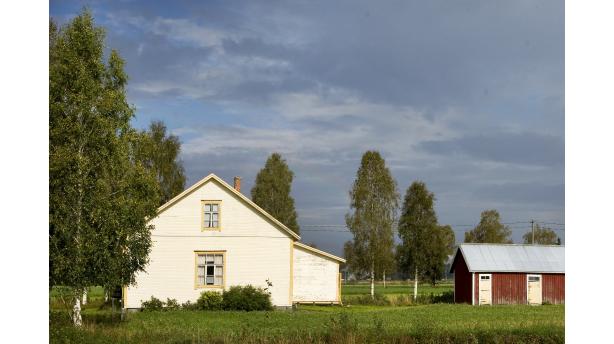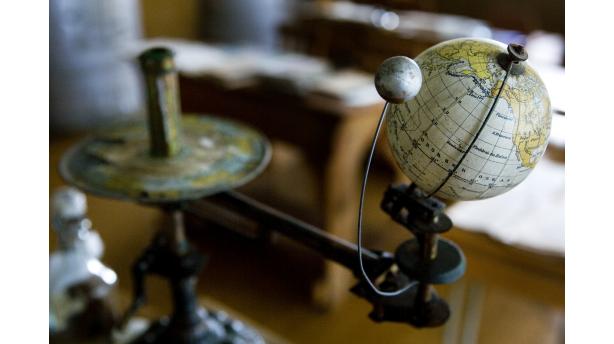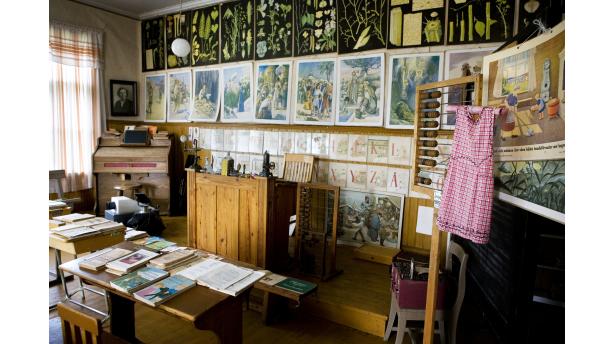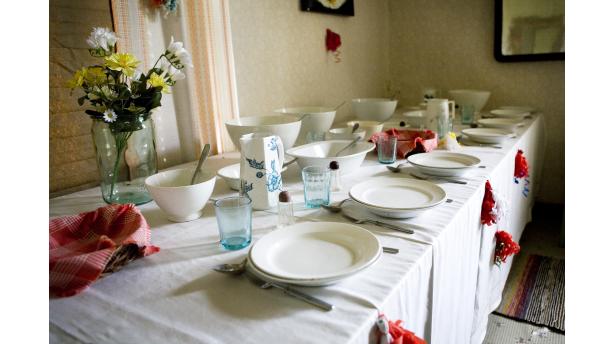One of the rarities in the museum is the home nursing box including various instruments and useful tools, such as a chart of the usual and unusual diseases of the past.
Museum A-Ö » Religion and society » Oravais School Museum in Kimo
Oravais School Museum in Kimo




Did you know...
In the Oravais School Museum is displayed the region’s school history in an old classroom, where the walls are bending with beautiful pictures, old books and black-and-white class photographs. Other exciting items tell about the versatile use of the school through the years. The museum is open during the Kimo Ironworks Day, but it can also be visited upon request.
The Oravais School Museum stems from the former little children’s school, which the Oravais congregation started beside the private schools. The original school cottage was located in Kyhrasberget just a stone’s throw away from the current school museum, and the cottage was used specially as a school already in 1877, which wasn’t common in those days. The congregation devolved the teaching to the Oravais municipality in 1918, and the name of the school became Norra Kimos lägre folkskola (the Primary Grammar School of Northern Kimo). The school building, which nowadays functions as a museum, was built in 1928. There were two classes and about 15-20 pupils in the school altogether. The school was unfortunately closed down already in 1938 due to student shortage.After the closing down the school building was utilized for various purposes. In the beginning of the 1940s the school house functioned as an epidemic hospital, during the years after the war in 1944-1946 as a Finnish school for the Karelian evacuees and later as a woodwork school in the beginning of the 1950s. The new Bygdeförening (regional society) purchased the house from the municipality at the end of the 1950s. The idea was to work for the comfort and development of the home region in different ways. In the regional association also belong Evangeliska Unga i Kimo (the Evangelic Youth of Kimo) and Kimo norra Marthakrets (the Northern Martha Circle of Kimo). In the beginning of the 1960s Sunday school was held in the house, and the Martha society arranged sewing, weaving and baking courses there. One of the largest mangles in the city was kept at the school in the 1960s and 1970s.
In the space, that used to function as the schoolmarm’s apartment, are preserved the Martha tableware and a traditional festive tableware. The festive tableware of the village could be rented for a reasonable price, if one’s own coffee cups, creamers or tureens didn’t suffice for the planned occasion. If some of the tableware was broken, it was replaced with one’s own dishes. In this way the tableware could become very varied after several years of use. The tableware was stored at the school, because it used to function as a gathering place of a sort.
In the schoolroom is one of the pearls of the museum: a vast and beautiful collection of various illustrations depicting handworks, different professions, history, religion, nature and the alphabet. The museum’s collection is comprised mainly of items received from the closed village schools. Step into a bygone time by exploring old school photographs, where each pupil has been named, or let old memories resurface along with glossy die cut paper scraps and poem books or a school menu from the year 1968. Free school meals were served early in Oravais: already in the 1920s children were offered free school food in Oravais, whereas in other schools of the county school meals were introduced only in 1943.



